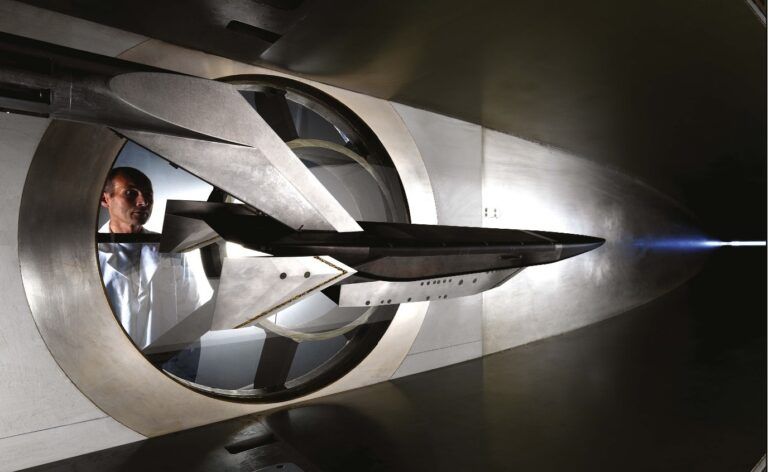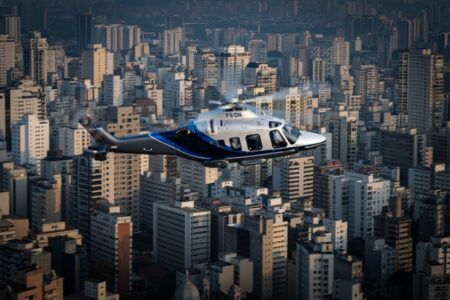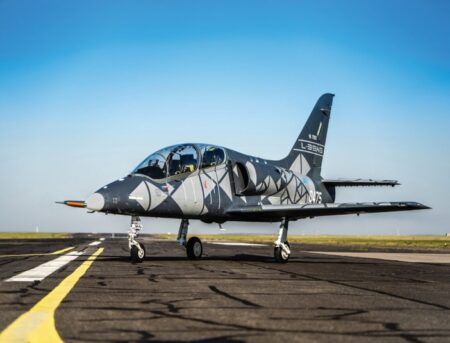As the aerospace industry puts greater emphasis on aerodynamics to improve fuel efficiency and performance, the need for wind tunnel testing has grown. Demand has also been driven by stricter regulations, as companies test to ensure compliance, and academic and research institutions are increasingly using wind tunnel testing for experimental studies.
There is an ongoing need for physical validation, even with the rise of simulation such as computational fluid dynamics (CFD). Although a critical tool for designing flight vehicles, even the best CFD models can be inadequate at capturing some critical features. Furthermore, physical testing can often be more cost effective than CFD.
The nature of many wind tunnel tests may have changed but the amount of testing has not decreased and indeed looks set to increase as new electric and autonomous vehicles are developed. These vehicles often have different aerodynamic profiles to conventional tube and wing aircraft and require testing to ensure safety and optimize their designs.
“An example is Wisk, a fully-owned Boeing subsidiary that’s developing the first autonomous, passenger-carrying electric vertical takeoff and landing air taxi in the USA,” says Marie-José Martinez, wind tunnels director at ONERA.
“Testing disruptive concepts such as eVTOLs and distributed propulsion will make wind tunnels indispensable, as the CFD for these new concepts will be challenging, meaning the need to experiment for validation in a wind tunnel will remain,” adds Henri Vos, business development manager at German-Dutch Wind Tunnels DNW.
THE BOEING TRANSONIC WIND TUNNEL
Located in Seattle, USA, the Boeing Transonic Wind Tunnel (BTWT) is one of several at Boeing and supports testing for nearly all its products – from commercial airliners to fixed-wing defense platforms and weapons systems. Recently, several rounds of high-speed testing was conducted at the Transonic Tunnel as part of developing the Boeing 777-9’s configuration. Amongst other things, the data was used to validate CFD predictions.

The BTWT can accommodate from 3 to ten test campaigns annually. Durations vary significantly depending on the product and test objectives.
“Some tests are only two to three weeks long, while others can last three to four months,” says Stefan Hovik, aero test enterprise capability leader at Boeing Test and Evaluation.
A single-return closed-circuit tunnel with an 8ft by 12ft (2.4m by 3.7m) test section, the BTWT was built in 1944 and has been updated and modernized many times to improve flow quality, temperature and humidity control, and tunnel productivity. It now operates at transonic speeds up to Mach 1.1.
The tunnel incorporates several model mounting options, including sting mounts as well as plate or floor mounting options. Sting-mounted models can be positioned for standard or high angle-of-attack studies. Combined pitch and yaw can be achieved with sting-swept struts and internal yaw heads or roll-pitch combinations. For tests requiring highly accurate cruise performance measurements, a plate mount is often used. Floor mounting is used for half-models, with the option of a splitter plate to space the model away from the floor.

A highly accurate six-component main balance located under the test section floor is available for use with the plate mounted and floor mounted models, and a variety of internal balances are available for sting/swept strut mounted models.
An auxiliary air supply of 20lb/sec (9.1kg/sec) at 1,000psi (6.9MPa) is available for blowing nacelles or power model applications. “It is critical that all of these tunnel capabilities are well maintained and ready to support emergent customer requirements, which can be quite varied,” says Hovik, adding that future aircraft technology development may drive emergent needs for even further wind tunnel enhancements.
A recent enhancement was made to the model motion control support system to incorporate a model roll mechanism. “The mechanism is capable of dual-roll wings level model pitch control as well as aeroballistic/ roll polar control,” Hovik explains. “These capabilities are often sought by defense aircraft and weapons systems programs to evaluate aerodynamic performance.”
Most BTWT customers are internal Boeing programs, but it also conducts testing for external customers such as business jet OEMs or other military defense systems.
DNW’S MARKNESSE SITE
The German-Dutch Wind Tunnels DNW Marknesse site in the Netherlands specializes in takeoff and landing configurations in the low-speed regime. Two of DNW’s three low-speed regime wind tunnels are found at Marknesse, the Low-Speed Tunnel and the Large Low- Speed Facility (LLF).
Primary clients are large aircraft and engine OEMs, but testing takes place on everything from civil and military through to spacecraft. “As all air vehicles have to start and land, all kinds of aircraft concepts are tested here, from conventional to eVTOL, distributed propulsion and multirotor concepts,” says Henri Vos, business development manager at DNW.

Last year the facility was involved in tests of the Lilium Jet concept vehicle.
“This is an eVTOL with distributed propulsion and 30 engines,” Vos says. “It was a highly complex model with scaled propulsion simulation that required the use of equally sophisticated measuring techniques.”
In addition to standard stability and control measurements, the DNW-LLF offers ground effect testing using a runway simulator. This includes a rolling belt that moves at the same speed as the airflow, allowing accurate simulation of relative wind speed beneath the model, which is essential for realistic ground effect analysis.
Aeroacoustic measurements are also performed here for both near and far field noise, with an option for an open jet configuration in the LLF where the acoustics can be measured without wind tunnel walls in order to prevent noise reflection. Time spent on tests is dependent on their nature, but can range from a few days to four to five months. In recent years Vos cites an average of seven to ten projects run annually in the LLF.
ONERA’S MODANE-AVRIEUX CENTER
Located in the French Alps, the Office National d’Etudes et de Recherches Aérospatiales’ (ONERA) Modane- Avrieux center has six test facilities capable of simulating all flight speeds up to hypersonic. This includes the largest sonic wind tunnel in the world, the Soufflerie 1 Modane Avrieux.
Requiring up to 88MW of power, S1MA can generate wind up to Mach 1 in an 8m (26.2ft) diameter test section and is one of two ONERA test centers supporting the development of decarbonization-focused propulsion systems and integration strategies. This is thanks to its ability to test the full speed range of a commercial aircraft from low to cruise speeds, and its capacity to accommodate large-scale models.

Modane-Avrieux is also home to S2MA, which can test the complete flight domain of a combat aircraft with seamless transition from subsonic to supersonic up to Mach 3, and “is key to quickly assessing the more aerodynamically efficient shapes of all kinds of vehicles,” says Martinez.
“Key exceptional features in the military domain include the capability to assess weapon separation thanks to S1MA and S2MA’s captive trajectography system,” she adds.
Finally, the blowdown wind tunnels S3MA and S4A focus on missile, ammunitions and space developments and have two support rigs, S4B and BD2.
ONERA is advancing its testing techniques to deliver more relevant data to customers. This includes integrating particle image velocimetry into large facilities like S1MA and developing unsteady pressure measurement in rotating or high-temperature zones.
Significant upgrades have been made to the site’s infrastructure recently, including a change of S1MA’s fan blades, replacing its 27-tonne faucets and the development of acoustic capabilities so that combined aerodynamic and acoustic measurements can be made.

“The facilities may be over 70 years old in the case of S1MA, but their high-quality infrastructure keeps them relevant for modern testing,” Martinez says. “The recognized flow quality, along with recent upgrades, such as improved Mach regulation at S1MA, continues to enhance their performance.”
Recent tests have included Safran’s Open Fan project, and over the next decade Modane-Avrieux’s wind tunnels will support the development of key programs from France’s Aeronautics Recovery Plan through to major international military initiatives.

THE BALLISTICS, AERO-OPTICS AND MATERIALS RANGE AT TEXAS A&M’S RELLIS CAMPUS
Ballistic ranges and hypersonic wind tunnels have long been complementary facilities, where wind tunnels have typically serviced larger or highly asymmetric test articles. However, hypersonic wind tunnels always suffer from at least one major drawback, they produce either cold or “noisy” flows, says Dr Jack Shine, research engineer III at the Bush Combat Development Complex on the Texas A&M University System’s RELLIS Campus.
“Cold-flow facilities expand and accelerate the test gas to hypersonic Mach numbers at the expense of freestream temperature, which limits the applicability of thermal loading experiments,” Shine explains. “Facilities like Texas A&M’s Hypervelocity Expansion Tunnel shock-heat the test gas to produce freestream temperatures true to flight trajectories, but these shock-driven facilities still introduce pressure fluctuations.”
On the other hand, the Texas A&M Mach 6 Quiet Tunnel delivers freestream pressure fluctuations like those present in Earth’s atmosphere, but this can only be done through a converging-diverging nozzle, where a cold-flow results. The BAM range in Bryan, USA complements these two facilities by enabling hypersonic testing and directed energy experiments using high-energy lasers within a continuous 500m-long (1,640ft), 2.4m-diameter (7.9ft) range.
“This is important because it helps researchers isolate the influences of specific elements of interest,” says Shine. “These capabilities make the BAM range a great asset for driving down the costs of hypersonic technologies.”
Its two-stage light-gas gun can launch 4in-diameter (101mm) projectiles at approximately Mach 10 and uses a wide array of high-rate sensors throughout the gun and the range tanks to monitor and control test operations.
“The key diagnostics in impact testing include x-ray and high-speed video,” explains Shine. “During rail-guided hypersonic testing, we use shadowgraph and schlieren imaging to visualize density gradient fluctuations, and we use carefully calibrated IR cameras to capture projectile temperature maps. In directed-energy testing, numerous photodetector pick-off stations are used to assess power and beam deviations due to near-field and far-field turbulence,” he says.
The range is currently working with NASA to develop novel diagnostics for ground testing applications, as well as talking to multiple industry collaborators about commercial and civilian applications. It was originally envisioned as a 1km-long (3,281ft) facility, and efforts are continuing under “Phase II” planning to make that a reality.
AERODYNAMICS FOR ALL
NASA has, for several years used online activity guides around building crude model wind tunnels as a STEM initiative. Recently the program has focused on encouraging educators and schools to move towards a technology-driven simulation through online interactive programs.
“These better reflect the more modern testing and evaluation landscape. Simulations are often used long before a physical model is built and tested,” says Jennifer Gratz, an engineer from NASA’s Glenn Research Center.

Two of the programs available to help design and test aircraft designs are OpenVSP and Aviary. OpenVSP is a vehicle sketch pad that allows users to design aircraft models and access example models created by the larger community. There are tutorials for its use and models can be downloaded and 3D-printed. NASA experts have conducted workshops for educators about ways to use it in classrooms.
Aviary is the newer of the two pieces of aircraft modeling software, and the result of taking older legacy codes from NASA’s Flight Optimization System and the General Aviation Synthesis Program, merging their best qualities, and adapting it to meet the needs of researchers outside of NASA. Like OpenVSP, it allows students and researchers to create conceptual aircraft online and run simulated tests on the design to see how it might perform.
“Aviary’s uniqueness lies in its ability to be combined with other tools and for its code to be extended,” says Gratz. “The older programs didn’t include more modern designs including hybrid-electric aircraft or battery considerations. Gradients are also now included, allowing a value affected by another value to be more instantaneously reflected, which used to require multiple tools or a modification of the existing program to accomplish this.”
Another consideration is ease of use. If a program is so complex that it’s difficult to teach, then its usefulness to the public is limited.
“Our current programs are easier to learn and use, allowing more educators and students to access and use them,” Gratz says.





